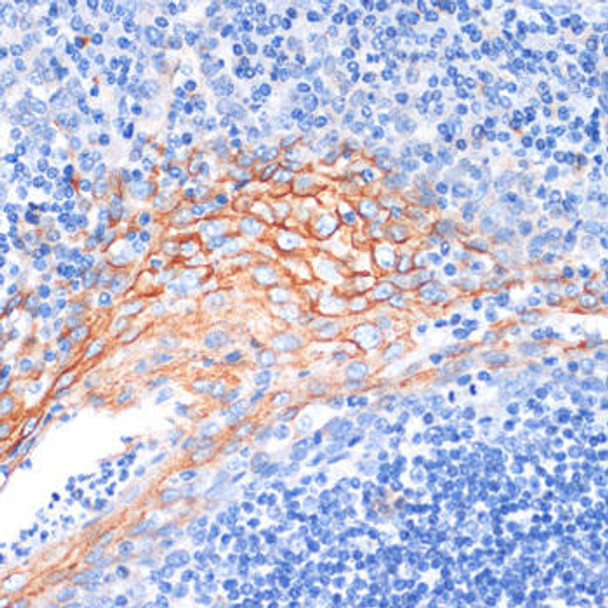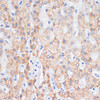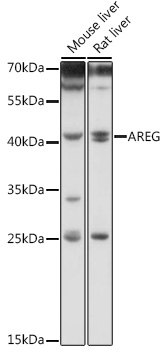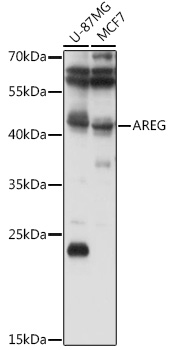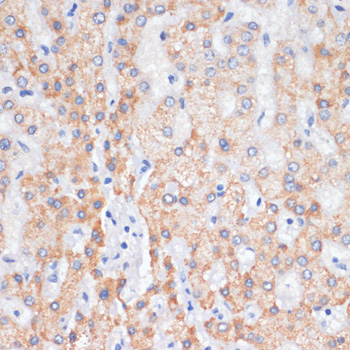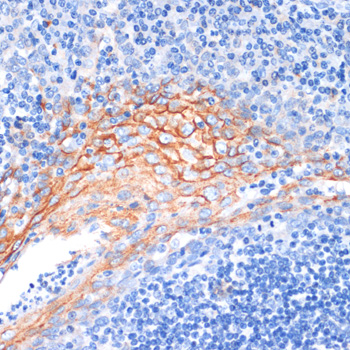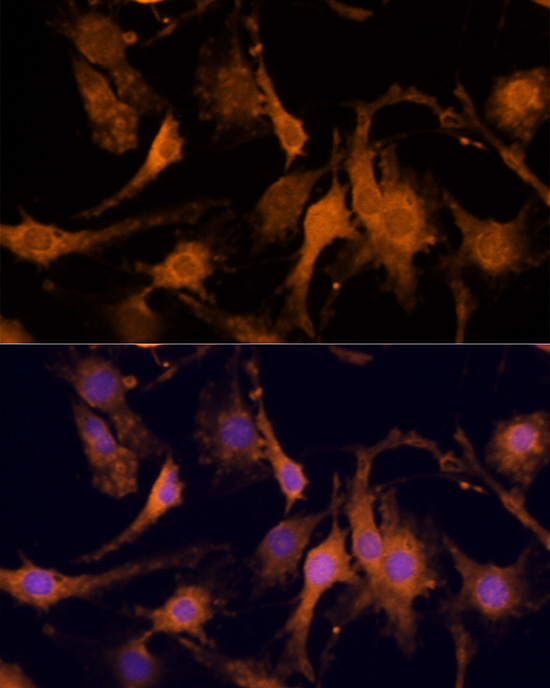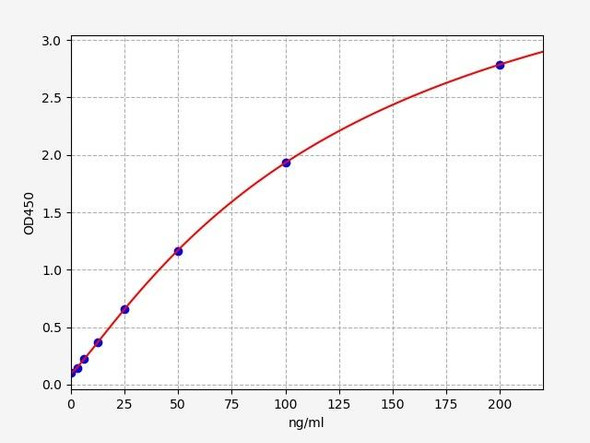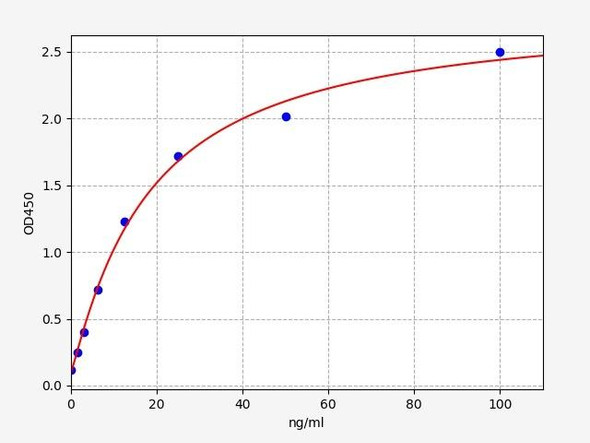Anti-AREG Antibody (CAB12680)
- SKU:
- CAB12680
- Product Type:
- Antibody
- Reactivity:
- Human
- Mouse
- Rat
- Host Species:
- Rabbit
- Isotype:
- IgG
- Antibody Type:
- Polyclonal Antibody
- Research Area:
- Cell Biology
Description
| Antibody Name: | Anti-AREG Antibody |
| Antibody SKU: | CAB12680 |
| Antibody Size: | 20uL, 50uL, 100uL |
| Application: | WB IHC IF |
| Reactivity: | Human, Mouse, Rat |
| Host Species: | Rabbit |
| Immunogen: | Recombinant fusion protein containing a sequence corresponding to amino acids 20-252 of human AREG (NP_001648.1). |
| Application: | WB IHC IF |
| Recommended Dilution: | WB 1:1000 - 1:2000 IHC 1:50 - 1:200 IF 1:50 - 1:200 |
| Reactivity: | Human, Mouse, Rat |
| Positive Samples: | U-87MG, MCF7, Mouse liver, Rat liver |
| Immunogen: | Recombinant fusion protein containing a sequence corresponding to amino acids 20-252 of human AREG (NP_001648.1). |
| Purification Method: | Affinity purification |
| Storage Buffer: | Store at -20'C. Avoid freeze / thaw cycles. Buffer: PBS with 0.02% sodium azide, 50% glycerol, pH7.3. |
| Isotype: | IgG |
| Sequence: | SGHY AAGL DLND TYSG KREP FSGD HSAD GFEV TSRS EMSS GSEI SPVS EMPS SSEP SSGA DYDY SEEY DNEP QIPG YIVD DSVR VEQV VKPP QNKT ESEN TSDK PKRK KKGG KNGK NRRN RKKK NPCN AEFQ NFCI HGEC KYIE HLEA VTCK CQQE YFGE RCGE KSMK THSM IDSS LSKI ALAA IAAF MSAV ILTA VAVI TVQL RRQY VRKY EGEA EERK KLRQ ENGN VHAI A |
| Gene ID: | 374 |
| Uniprot: | P15514 |
| Cellular Location: | Membrane, Single-pass membrane protein |
| Calculated MW: | 27kDa |
| Observed MW: | 43kDa |
| Synonyms: | AREG, AR, AREGB, CRDGF, SDGF, amphiregulin |
| Background: | The protein encoded by this gene is a member of the epidermal growth factor family. It is an autocrine growth factor as well as a mitogen for astrocytes, Schwann cells and fibroblasts. It is related to epidermal growth factor (EGF) and transforming growth factor alpha (TGF-alpha). The protein interacts with the EGF/TGF-alpha receptor to promote the growth of normal epithelial cells, and it inhibits the growth of certain aggressive carcinoma cell lines. It also functions in mammary gland, oocyte and bone tissue development. This gene is associated with a psoriasis-like skin phenotype, and is also associated with other pathological disorders, including various types of cancers and inflammatory conditions. |
| UniProt Protein Function: | AREG: Ligand of the EGF receptor/EGFR. Autocrine growth factor as well as a mitogen for a broad range of target cells including astrocytes, Schwann cells and fibroblasts. Belongs to the amphiregulin family. |
| UniProt Protein Details: | Protein type:Membrane protein, integral Chromosomal Location of Human Ortholog: 4q13.3 Cellular Component: extracellular space; cell surface; cytoplasm; integral to membrane; nucleus Molecular Function:protein binding; growth factor activity; cytokine activity; epidermal growth factor receptor binding Biological Process: epidermal growth factor receptor signaling pathway; response to peptide hormone stimulus; response to cAMP; response to glucocorticoid stimulus; response to estradiol stimulus; glial cell proliferation; cell proliferation; G-protein coupled receptor protein signaling pathway; cell-cell signaling; response to hydrogen peroxide; positive regulation of cell proliferation; negative regulation of osteoblast differentiation; neurite development; positive regulation of phosphorylation; positive regulation of DNA replication |
| NCBI Summary: | The protein encoded by this gene is a member of the epidermal growth factor family. It is an autocrine growth factor as well as a mitogen for astrocytes, Schwann cells and fibroblasts. It is related to epidermal growth factor (EGF) and transforming growth factor alpha (TGF-alpha). The protein interacts with the EGF/TGF-alpha receptor to promote the growth of normal epithelial cells, and it inhibits the growth of certain aggressive carcinoma cell lines. It also functions in mammary gland, oocyte and bone tissue development. This gene is associated with a psoriasis-like skin phenotype, and is also associated with other pathological disorders, including various types of cancers and inflammatory conditions. [provided by RefSeq, Apr 2014] |
| UniProt Code: | P15514 |
| NCBI GenInfo Identifier: | 113754 |
| NCBI Gene ID: | 374 |
| NCBI Accession: | P15514.2 |
| UniProt Secondary Accession: | P15514,Q5U026, |
| UniProt Related Accession: | P15514 |
| Molecular Weight: | 27,895 Da |
| NCBI Full Name: | Amphiregulin |
| NCBI Synonym Full Names: | amphiregulin |
| NCBI Official Symbol: | AREG |
| NCBI Official Synonym Symbols: | AR; SDGF; AREGB; CRDGF |
| NCBI Protein Information: | amphiregulin; amphiregulin B; schwannoma-derived growth factor; colorectum cell-derived growth factor |
| UniProt Protein Name: | Amphiregulin |
| UniProt Synonym Protein Names: | Colorectum cell-derived growth factor; CRDGF |
| Protein Family: | Amphiregulin |
| UniProt Gene Name: | AREG |
| UniProt Entry Name: | AREG_HUMAN |




